Abstract
1 We have observed the effects of intravenous prenalterol (1 mg and 2 mg) on ventricular performance, assessed by radionuclide ventriculography, in nine patients with ischaemic heart disease with varying degrees of impairment of ventricular performance. In seven of these patients the effects of prenalterol were compared with those of isoprenaline infused at 1 microgram/min. 2 Prenalterol caused no significant increase in heart rate, but systolic blood pressure increased by 26% (P less than 0.002). In contrast, isoprenaline caused heart rate to increase by 22% (P less than 0.02) and diastolic blood pressure to fall by 9% (P less than 0.01). 3 Left ventricular ejection fraction (LVEF) increased with both drugs, but the increase was greater with isoprenaline, as was the fall in the ratio mean ejection time: left ventricular ejection time, which is an index of improved ventricular performance. 4 Because of the increased heart rate and stroke volume produced by isoprenaline, cardiac output increased 45% above control values (P less than 0.001), but the increase in cardiac output after prenalterol did not reach statistical significance. 5 In three patients with very poor ventricular function (LVEF less than 0.30) prenalterol had little effect on ejection fraction, and caused increased regional ventricular dyskinesia. 6 The increase in systolic blood pressure, and therefore cardiac afterload brought about by prenalterol may limit ventricular response. The response might be enhanced by the addition of vasodilator therapy.
Full text
PDF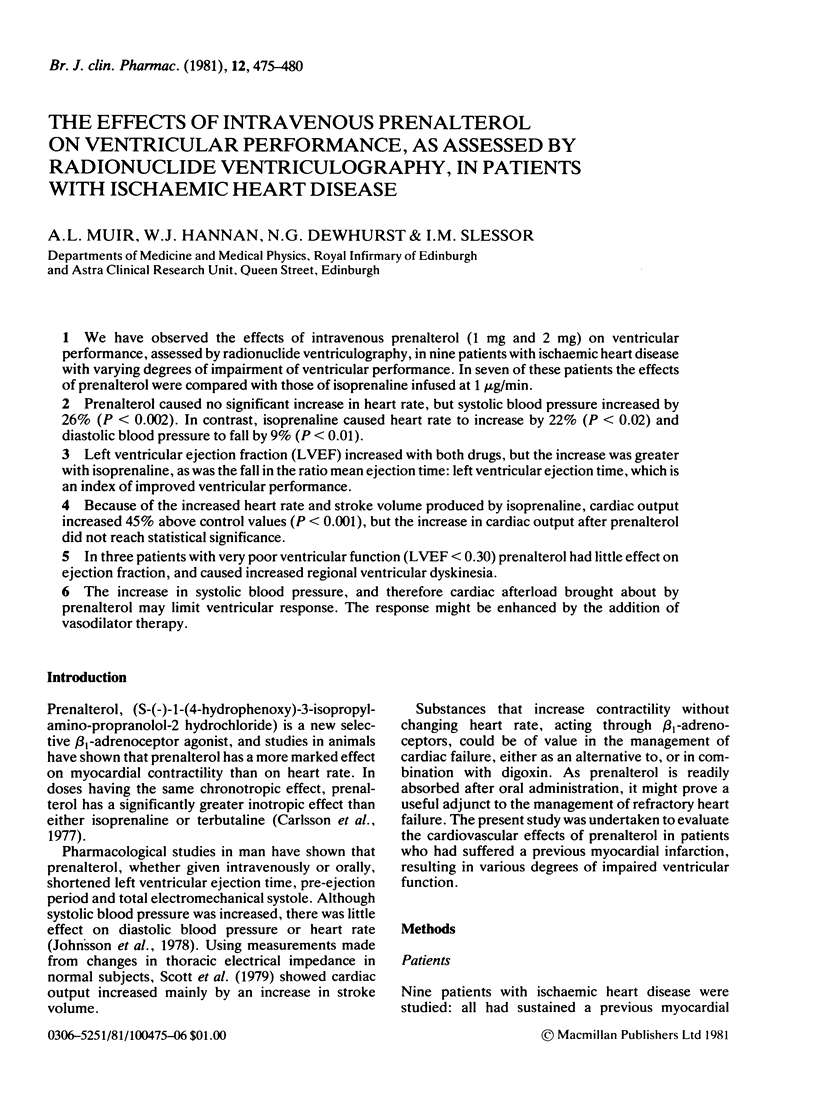
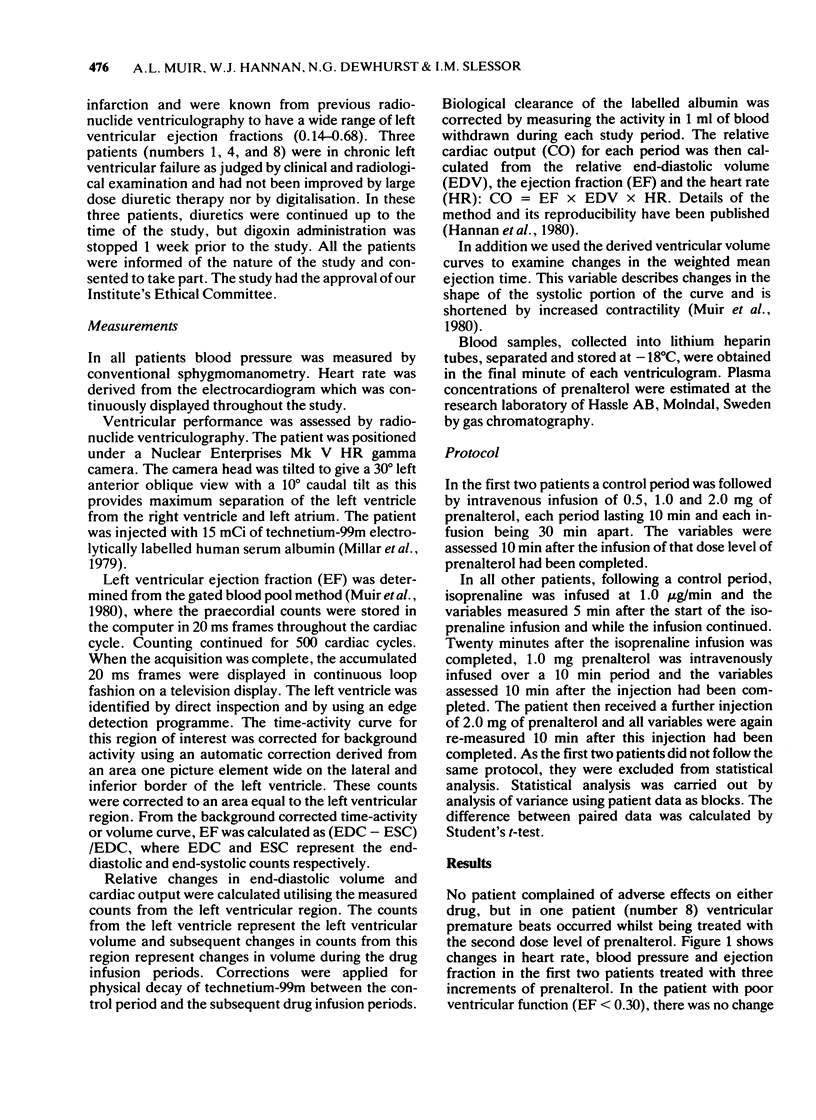
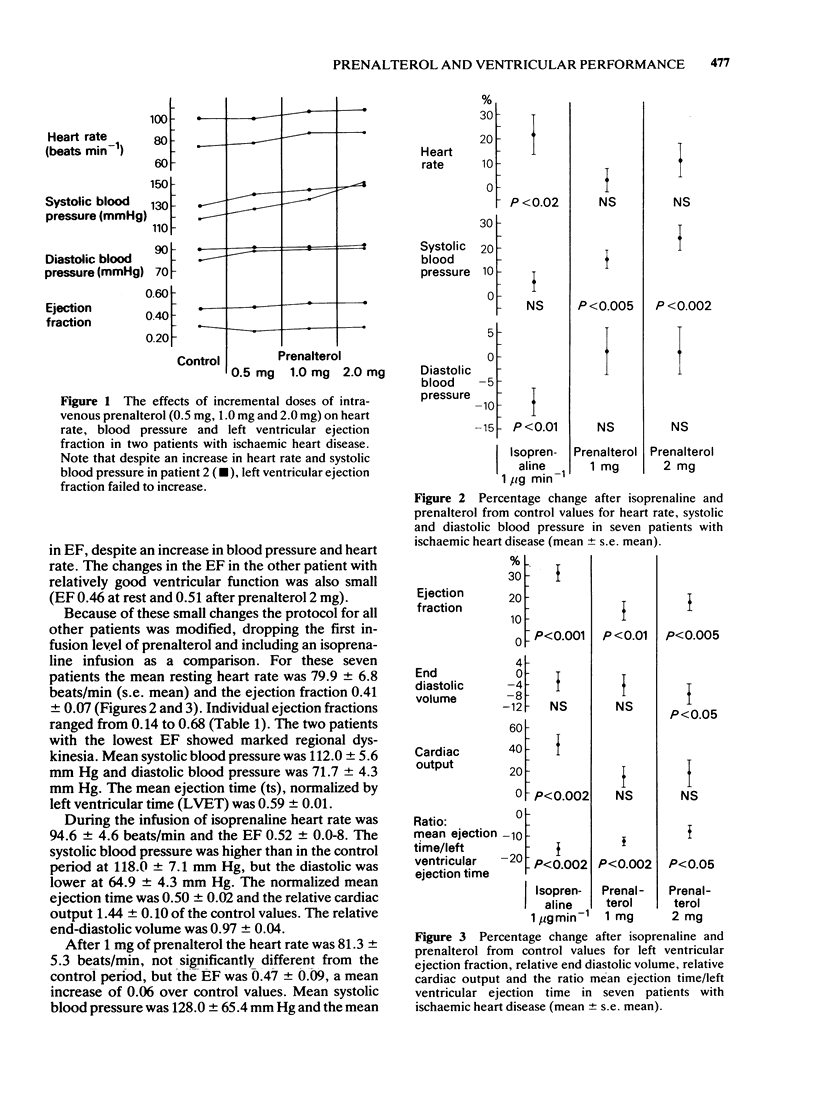
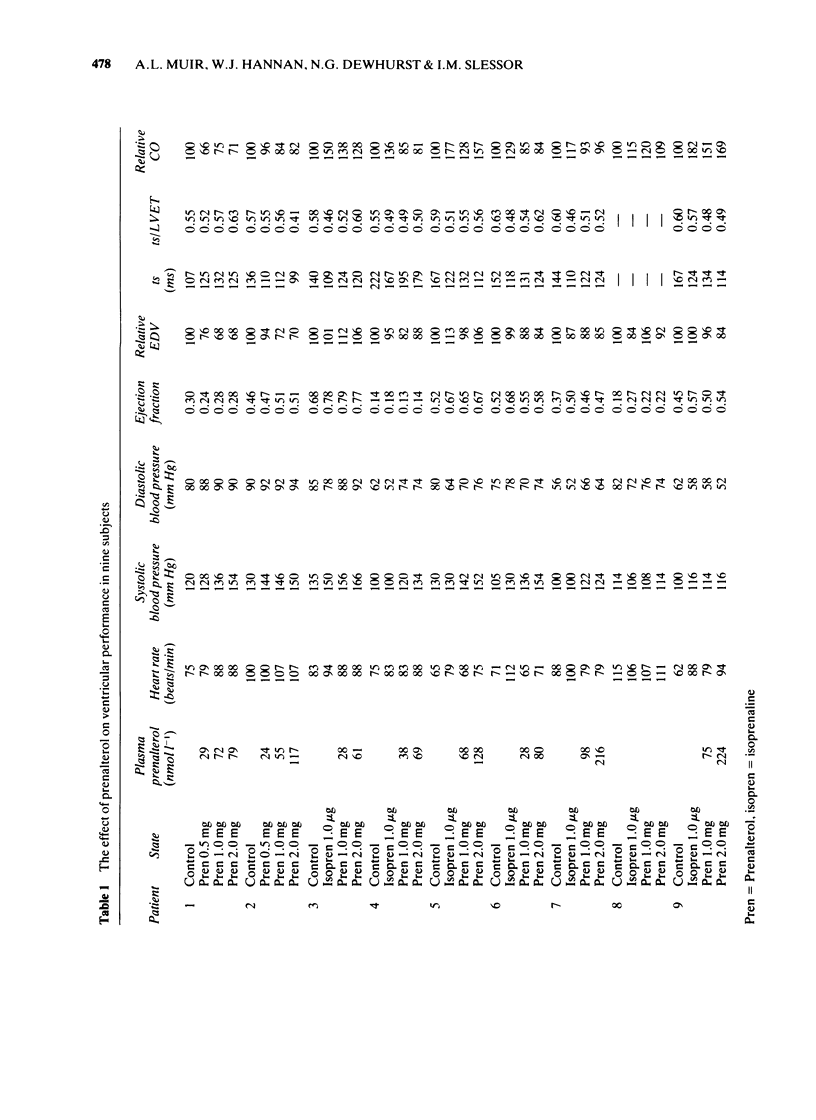
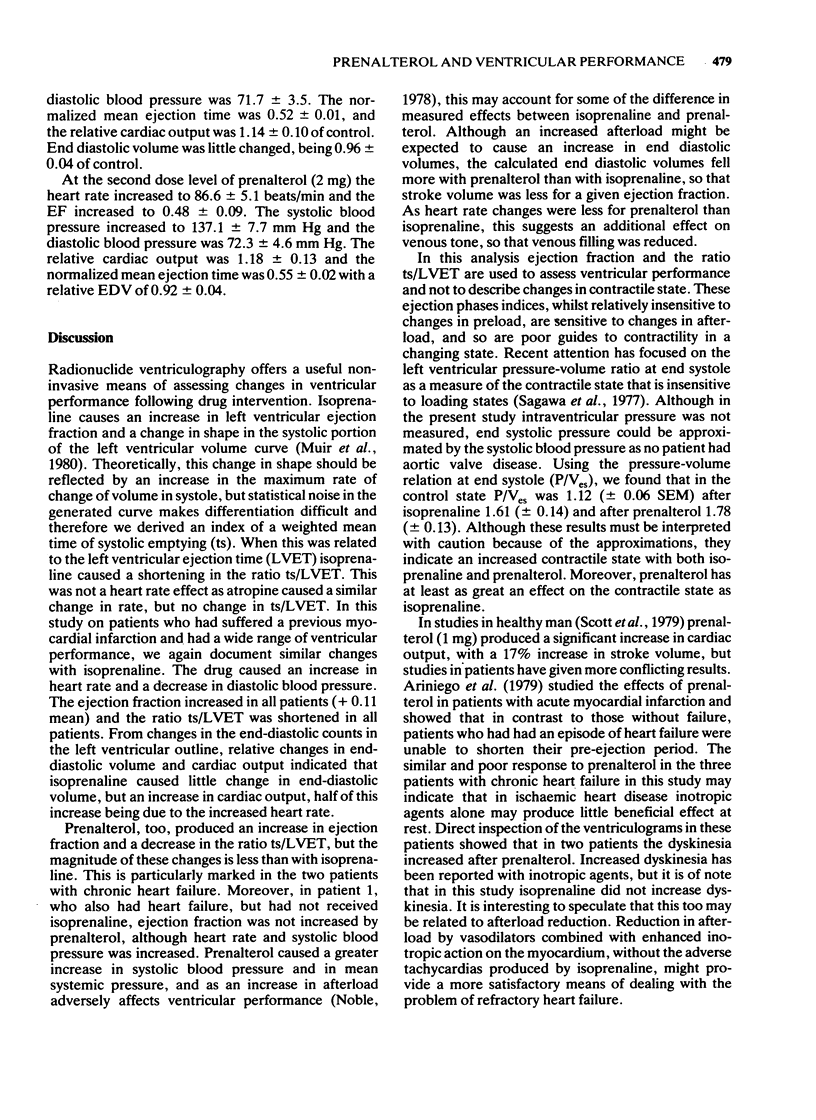
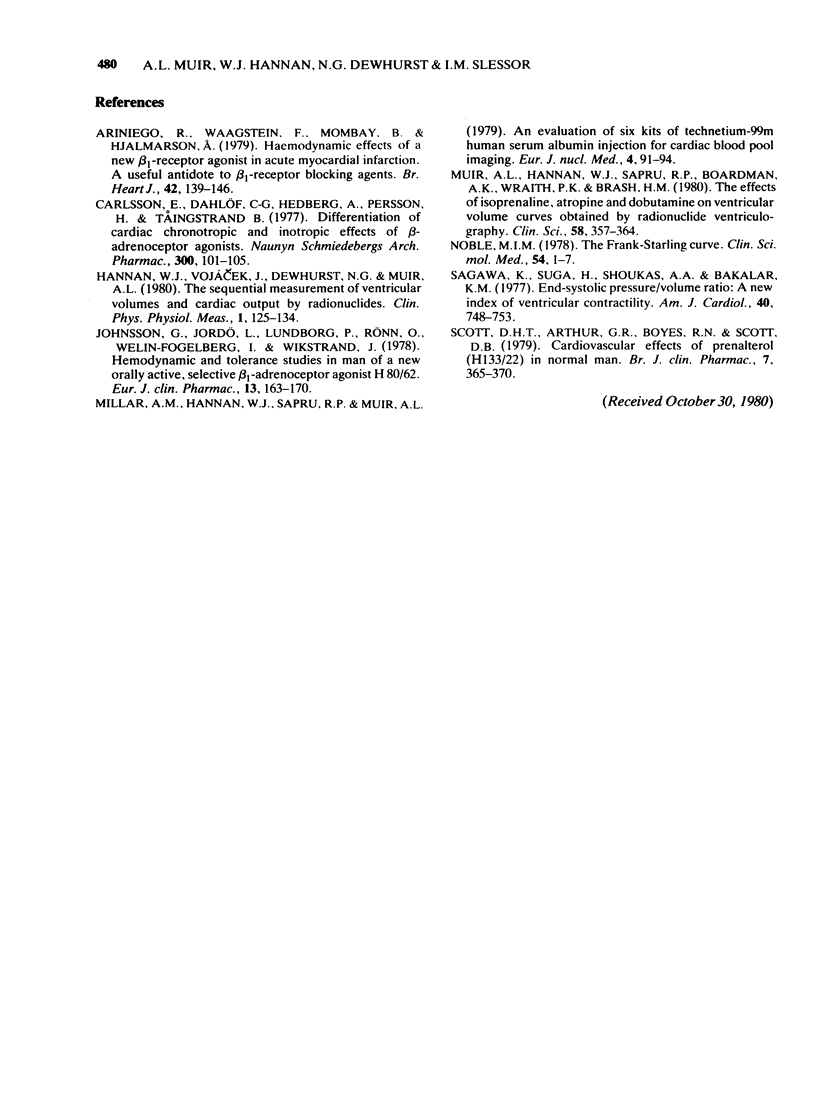
Selected References
These references are in PubMed. This may not be the complete list of references from this article.
- Ariniego R., Waagstein F., Mombay B., Hjalmarson A. Haemodynamic effects of a new beta 1-receptor agonist in acute myocardial infarction. A useful antidote to unwanted cardiac effects of beta-blocking agents. Br Heart J. 1979 Aug;42(2):139–146. doi: 10.1136/hrt.42.2.139. [DOI] [PMC free article] [PubMed] [Google Scholar]
- Carlsson E., Dahlöf C. G., Hedberg A., Persson H., Tångstrand B. Differentiation of cardiac chronotropic and inotropic effects of beta-adrenoceptor agonists. Naunyn Schmiedebergs Arch Pharmacol. 1977 Nov;300(2):101–105. doi: 10.1007/BF00505039. [DOI] [PubMed] [Google Scholar]
- Johnsson G., Jordö L., Lundborg P., Rönn O., Welin-Fogelberg I., Wikstrand J. Haemodynamic and tolerance studies in man of a new, orally active, selective beta1-adrenoceptor agonist H 80/62. Eur J Clin Pharmacol. 1978 May 31;13(3):163–170. doi: 10.1007/BF00609978. [DOI] [PubMed] [Google Scholar]
- Millar A. M., Hannan W. J., Sapru R. P., Muir A. L. An evaluation of six kits of technetium 99m human serum albumin injection for cardiac blood pool imaging. Eur J Nucl Med. 1979 Apr 1;4(2):91–94. doi: 10.1007/BF00626077. [DOI] [PubMed] [Google Scholar]
- Muir A. L., Hannan W. J., Sapru R. P., Boardman A. K., Wraith P. K., Brash H. M. The effects of isoprenaline, atropine and dobutamine on ventricular volume curves obtained by radionuclide ventriculography. Clin Sci (Lond) 1980 May;58(5):357–364. doi: 10.1042/cs0580357. [DOI] [PubMed] [Google Scholar]
- Noble M. I. The Frank--Starling curve. Clin Sci Mol Med. 1978 Jan;54(1):1–7. doi: 10.1042/cs0540001. [DOI] [PubMed] [Google Scholar]
- Sagawa K., Suga H., Shoukas A. A., Bakalar K. M. End-systolic pressure/volume ratio: a new index of ventricular contractility. Am J Cardiol. 1977 Nov;40(5):748–753. doi: 10.1016/0002-9149(77)90192-8. [DOI] [PubMed] [Google Scholar]
- Scott D. H., Arthur G. R., Boyes R. N., Scott D. B. Cardiovascular effects of prenalterol (H133/22) in normal man. Br J Clin Pharmacol. 1979 Apr;7(4):365–370. doi: 10.1111/j.1365-2125.1979.tb00947.x. [DOI] [PMC free article] [PubMed] [Google Scholar]


